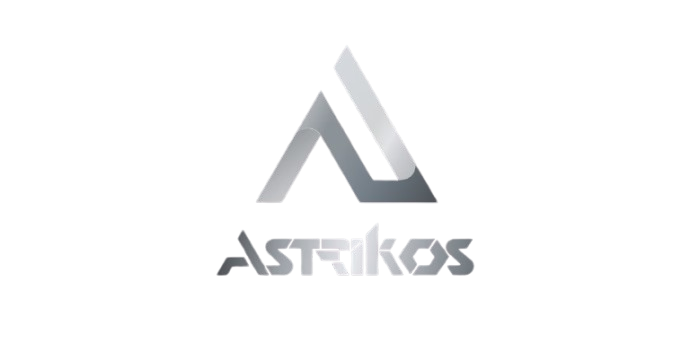Agentic AI in Manufacturing – Moving Beyond Automation to Autonomous Decision-Making. For decades, automation has defined the modern manufacturing landscape, robots assembling cars, sensors managing conveyor belts, and software optimizing production schedules. While automation brought efficiency, consistency, and cost savings, it has largely been reactive and rule based. Enter the next evolution: Agentic AI, a transformative force that doesn’t just follow instructions but makes informed, autonomous decisions. This shift signals a new era where machines are not just tools, but intelligent agents contributing to business outcomes.
What Is Agentic AI?
Agentic AI refers to artificial intelligence systems that exhibit agency, the ability to perceive their environment, make decisions based on goals, and take actions independently, often in dynamic and uncertain conditions. Unlike traditional AI or automation, agentic AI doesn’t just automate tasks; it navigates trade-offs, adapts to real-time feedback, and aligns decisions with broader operational objectives.
Think of it as the difference between a robotic arm programmed to place items in a box and an AI agent that decides which items, when, where, and why, based on demand forecasts, inventory levels, and supply chain status.
From Automation to Autonomy: The Evolution
Let’s break down the transition in manufacturing:
- Automation (Past and Present)
Tasks are predefined. Machines execute repetitive actions faster than humans. Examples include CNC machining, robotic welding, and automated inspection systems. Efficient, but rigid.
- Assisted Intelligence (Transitional Phase)
AI tools help managers make decisions, predictive maintenance, quality control analytics, energy optimization. These systems provide insights but still rely on human interpretation.
- Agentic AI (Emerging Future)
AI systems operate independently within parameters. They manage supply disruptions, adjust production rates, reroute logistics, and optimize resource allocation without constant human input.
Real-World Examples of Agentic AI in Manufacturing
- Autonomous Supply Chain Agents
AI systems monitor global shipment delays, weather events, and raw material prices to reroute orders or switch suppliers on the fly, ensuring just-in-time manufacturing without manual escalation. - Intelligent Production Scheduling
Instead of waiting for planners to adjust schedules during machine downtime, agentic AI reschedules jobs based on available capacity, labor, and urgency, maximizing uptime and throughput. - Adaptive Quality Control
When defects arise, traditional automation flags the issue. Agentic AI investigates root causes, tweaks upstream parameters, and even pauses production if thresholds are breached, prioritizing long-term reliability over short-term output. - Energy-Aware Decision-Making
AI agents optimize machine operations around renewable energy availability or off-peak grid pricing, reducing both costs and carbon footprint, without human prompts.
Why Agentic AI Matters Now
Several converging factors make this the right time for agentic AI in manufacturing:
- Data abundance: Manufacturing environments are now sensor-rich, generating terabytes of operational data.
- Edge computing: Real-time decision-making at the source is now viable, reducing latency and dependence on cloud processing.
- Labor shortages: As skilled labor becomes harder to find, autonomous systems help fill the gap.
- Supply chain volatility: With global disruptions now the norm, static systems fall short; agile, decision-making AI is a necessity.
The Cultural Shift: From Control to Collaboration
Agentic AI doesn’t eliminate humans; it redefines their role. In the traditional model, engineers and managers controlled every variable. With agentic AI, they become orchestrators, focusing on strategy, innovation, and exception handling while the AI agents manage routine decisions at scale.
This shift requires a cultural change. Trust in machines must grow, and transparency in decision logic becomes crucial. Manufacturers must ensure that agentic AI is explainable, auditable, and aligned with business ethics and compliance standards.
Challenges and Guardrails
With power comes responsibility. Agentic AI raises important questions:
- Oversight: What if an AI agent makes a wrong decision? How are boundaries set?
- Accountability: Who is responsible for autonomous decisions, vendors, developers, or operators?
- Bias and Safety: Do the algorithms have unintended consequences? Are edge cases handled safely?
Organizations adopting agentic AI must build fail-safes, human override mechanisms, and strong governance protocols. The goal isn’t to hand over control blindly, but to collaborate with intelligent systems in a safe, scalable manner.
The Future: Agentic Factories as Living Ecosystems
Imagine a factory where:
- Machines self-diagnose and reorder parts.
- Production lines adjust to customer demand in real time.
- Packaging systems switch formats based on shipping conditions.
- AI agents communicate across departments, balancing goals from sustainability to profitability.
This isn’t science fiction, it’s the logical next step in smart manufacturing. With agentic AI, factories evolve from controlled environments into living, learning ecosystems capable of self-regulation and continuous improvement.
Conclusion: Manufacturing with Minds, Not Just Machines
Agentic AI marks a radical leap, from automation that executes, to intelligence that evaluates. It brings manufacturing closer to true resilience, where systems adapt in real time, optimize without instruction, and partner with human intelligence to navigate complexity.
As we move into this new industrial era, agentic AI will become the invisible backbone of high-performance, sustainable, and adaptive manufacturing, transforming how we build, produce, and innovate.

